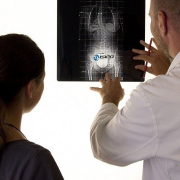Different specialists, different prescriptions: how should we choose?
Most parents of a child with scoliosis embark on a similar journey: once they have received the initial diagnosis, they start consulting other specialists, seeking second or third opinions that might provide them with the confirmation and reassurance they need, and/or simply answers to further questions and doubts that have cropped up in the meantime.
Often, though, parents who do this find themselves left with more questions than answers. This is because different specialists, faced with the same scoliosis case, can make different diagnoses and prescribe different courses of treatment.
Why is this? There may be different reasons. Before going any further, though, it is important to remember that only a specialist with specific training in vertebral pathologies can treat scoliosis. Once a timely and correct diagnosis has been made, it is necessary to decide how to treat the condition.
The SOSORT guidelines on conservative treatment of scoliosis are an important resource in this regard. Taking into account the best current scientific evidence, as well as the extent of the curves and the degree of bone maturation, they provide suggestions on the most effective treatment.
What the guidelines offer is not a single, specific course of treatment, but rather a series of options, ranging from the most conservative to the most aggressive, that could conceivably be prescribed in a given patient.
However, science alone cannot meet all the needs of a long and complex course of treatment of the kind required in scoliosis. The evidence-based medicine approach brings together and combines scientific knowledge, the expertise and experience of the specialist, and the values and desires of the patient, and therefore makes it possible to formulate the most appropriate prescription for the individual case.
Bearing all this in mind, then, it may well be that one doctor, considering the data collected during the examination and the discussion with the patient and the patient’s family, decides to prescribe a brace where another doctor might instead recommend only specific physiotherapy or even a wait-and-see approach, which consists of monitoring the situation for a few months to see how the scoliosis evolves.
These are very different prescriptions, but they are all valid. The patient will in any case be monitored following the prescription in order to make sure that the type of treatment, and the dose, are correct.
In this way, it is also possible to make any changes needed to avoid under-treatment (insufficient to contain the progression of the disease) or over-treatment (too taxing for the patient).
The big question remains: how do we parents go about choosing? There’s no easy answer. Given that our children will need to be on this therapeutic journey until they have finished growing, the important thing is to find someone we feel we can trust. In other words, we need to choose the specialist — and it must be someone with expertise in the conservative treatment of scoliosis — who we, and our child, felt to be the most reassuring and empathetic.
Once we have made our choice, we need to place our child’s care in the doctor’s hands. It is important to follow the instructions we are given, and not to change anything without the doctor’s agreement, as to do so could undermine the success of the treatment.











Leave a Reply
Want to join the discussion?Feel free to contribute!